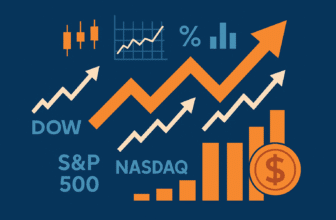
The People’s Bank of China (PBOC), the country’s central bank, underscored global efforts to regulate digital assets in its 2024 financial stability report, highlighting the active exploration of a digital asset licensing regime by Hong Kong. This focus underscores China’s balanced approach towards managing financial stability while keeping an eye on the evolving nature of digital assets in the financial market.
Released on December 27, the China Financial Stability Report devoted a section to digital assets. The PBOC pointed out that 51 jurisdictions globally have either implemented bans or set restrictions on digital assets. It particularly noted how economies such as Switzerland and the United Kingdom have adjusted existing finance laws, welcoming digital asset regulation, whereas the European Union introduced new legislation with its Markets in Crypto Assets Regulation (MiCAR).
Since September 2021, the PBOC, alongside nine other Chinese regulators, issued “Notice on Further Preventing and Managing the Risks of Crypto Trading No. 237.” This effectively banned digital assets in mainland China, clarifying that digital assets are not legal tender. Transactions involving these assets are illegal, and participants face administrative and criminal penalties. This regulation stresses that providing online services via overseas digital asset trading platforms to Chinese residents is illegal, liable to criminal accountability.
This stringent regulatory stance contrasts with the legal trading status of digital assets in Hong Kong. In June 2023, Hong Kong rolled out a digital asset licensing regime for trading platforms, enabling licensed exchanges to provide retail trading services. The Hong Kong Legislative Council reiterated its commitment to establishing the region as a crypto-hub. In August 2024, Council member David Chiu announced plans to augment digital asset regulations within the coming 18 months, targeting enhanced supervision and enforcement.
Chiu emphasized the Hong Kong government’s aim to bolster regulatory measures for digital asset financial products, including stablecoins. The region has conducted Sandbox tests to determine the optimal regulatory framework, aiming to address financial stability without hindering innovation in digital assets.
Moreover, the PBOC financial stability report highlighted that Hong Kong mandates major financial institutions, like HSBC and Standard Chartered Bank, to incorporate digital asset transactions within their regular customer supervision practices.
The PBOC further suggested improvements in the international regulatory framework for digital assets, as advocated by the Financial Stability Board (FSB) in their July 2023 publication, “Global Regulatory Framework for Crypto-Asset Activities.” While connections between crypto activities and significant financial institutions seem limited, cryptocurrencies pose potential risks in certain economies. This is particularly pertinent as the application scenarios for cryptocurrencies in payments and retail investments continue to expand.
China’s firm stance on digital asset regulation reflects its broader strategy to manage inflation and interest rates, ensuring stability in its financial system. This approach helps mitigate risks associated with fluctuating interest rates and inflation, critical for maintaining economic equilibrium amidst global financial changes.
The emphasis on regulation is part of China’s broader financial strategy, aligning with its domestic policies on real estate, finance stability, and the development of a digital yuan. By regulating digital assets stringently, China aims to ensure financial integrity without compromising the stability of its stock market, credit unions, or insurance sectors.
As the financial world evolves, strategic decisions like these will shape the future relationship between traditional finance institutions and innovative digital financial products. The rise of digital asset financing options is expected to impact personal loans and budgeting practices, reflecting a shift towards more digitally-influenced financial dealings.
With global financial news increasingly focusing on China’s financial maneuvers, international markets remain attentive to developments in China’s stock and forex markets. As China continues to develop its regulatory framework, the implications for global market dynamics, including forex trading and the stock market, are significant.
In conclusion, as the digital finance landscape evolves, China’s strategic regulatory approach serves as a pivotal component in the ongoing discourse surrounding digital assets and financial news, both domestically and globally. By maintaining a tight regulatory grip domestically while observing Hong Kong’s experiments, China addresses current financial challenges like interest rates and inflation, reinforcing the stability of its comprehensive financial landscape.
















